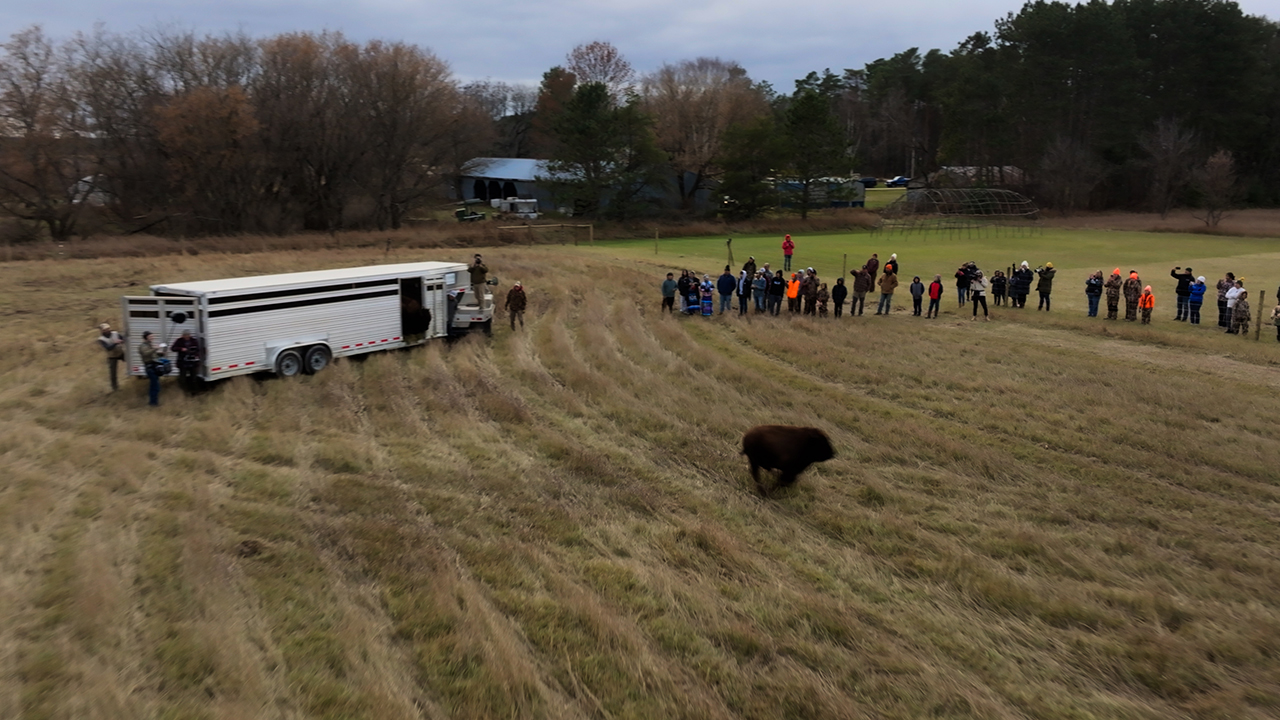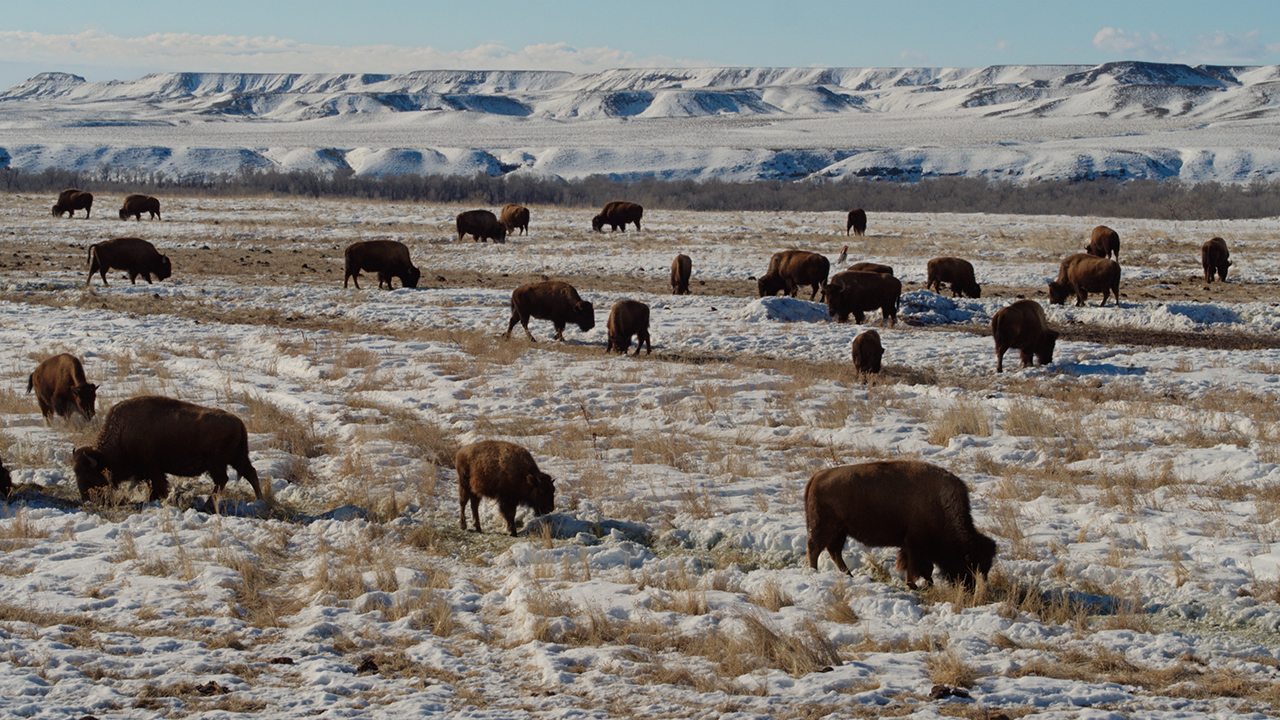‘Homecoming’ examines return of American buffalo to Indigenous lands, including Wisconsin
October 18, 2023 Leave a Comment
Homecoming, a new film directed by Julianna Brannum (The American Buffalo, Conscience Point, Native America) extends the story of Ken Burns’s new film, The American Buffalo, to the present by examining the return of the species to Indigenous lands, including the Menominee Nation in Wisconsin, today. Homecoming is available to stream now on pbswisconsin.org and on the free PBS App.
The 18-minute film, a Florentine Films production with Ken Burns as executive producer, highlights the foundational work of the InterTribal Buffalo Council (ITBC) and its partner organizations, and how they’ve become a guiding force in the food sovereignty and cultural revitalization movements led by tribal citizens across the United States. Brannum, a citizen of the Comanche Nation, also served as a consulting producer on The American Buffalo on PBS.
The American Buffalo, a two-part broadcast film, takes viewers on a journey through more than 10,000 years of North American history and across some of the continent’s most iconic landscapes, tracing the mammal’s evolution, its significance to the Great Plains and, most importantly, its relationship to the Indigenous People of North America.
Homecoming takes viewers from that film’s conclusion into the 21st century and examines how the ITBC’s Bison Conservation and Transfer Program is supporting buffalo restoration to the Indigenous people whose lives, spiritually and physically, were inextricably linked to the bison for thousands of years.
Each winter, approximately 200 bison are transferred to tribal nations around the country. The film follows Jason Baldes, an Eastern Shoshone and a member of the InterTribal Buffalo Council, who was also an advisor to the Burns Film, as he leads historic transfers of bison from the city of Denver, Colorado, to his own Wind River Reservation in Wyoming, and from a Nature Conservancy Preserve in Illinois to the Menominee in Wisconsin, communities which will maintain their bison herds to supply a healthy food source and cultural touchstone to their tribal citizens for eternity. The film discusses what living among the bison once again means for Native people – today and for future generations.
“For many tribes, including my own, our entire lives were centered on this animal,” Brannum said. “It had disappeared from our culture for a time, but with the hard work of folks like Jason Baldes and the InterTribal Buffalo Council, we are seeing a powerful rematriation – a return to our traditional lifeways that help to ground us and refocus our attention to the natural world. It was a real honor to witness such a powerful moment in Menominee history when they welcomed back their animal relatives to their lands.”
“The American Buffalo is a morality tale encompassing two historically significant lessons that resonate today: how humans can damage the natural world and also how we can work together to make choices to preserve the environment around us,” Ken Burns said. “Like all stories focused on history, this one continues into the present. With Homecoming, Julianna tells a powerful story about the important and exciting efforts now underway to restore bison to their ancestral lands and help Native people revive their sacred relationship that for millennia was a vital source of sustenance and spirituality. The film also asks each of us to think about our relationship to the land and the species that inhabit it differently, recognizing that these are ecosystems that must be sustained.”

Menomiee Tribe buffalo release, November 2022
For thousands of generations, buffalo have evolved alongside Indigenous people who relied on them for food and shelter, and, in exchange for killing them, revered the animal. The stories of Native people anchor The American Buffalo, including the Kiowa, Comanche and Cheyenne of the Southern Plains; the Pawnee of the Central Plains; the Salish, Kootenai, Lakota, Mandan-Hidatsa, Aaniiih, Crow, Northern Cheyenne and Blackfeet from the Northern Plains; and others.
The series documents the startling swiftness of the species’ near extinction in the late 19th century. Numbering an estimated 30 million in the early 1800s, the herds began declining for a variety of reasons, including the lucrative buffalo robe trade, the steady westward settlement of an expanding United States, diseases introduced by domestic cattle and drought. But the arrival of the railroads in the early 1870s and a new demand for buffalo hides to be used in the belts driving industrial machines back East brought thousands of hide hunters to the Great Plains. In just over a decade the number of bison collapsed from 12-15 million to fewer than a thousand, representing one of the most dramatic examples of our ability to destroy the natural world. By 1900, the American buffalo teetered on the brink of disappearing forever, and the Native people of the Plains entered one of the most traumatic moments of their existence.
But the other, lesser-known part of this story, told in the film’s second episode, is about the people who set out to save the species from extermination and how they did it. Their actions provide compelling proof that we are equally capable of pulling back from the brink of environmental catastrophe if we set our minds to it.
 Passport
Passport






Deborah Brasic says:
I’m so glad to see balance finally being restored.
Katie M DeVries says:
This is a wonderful, but painful history lesson and educational piece. I learned a lot from Ken Burns film “American Buffalo” and the film “Homecoming”. Thank you very much for this teaching/learning opportunity.
Alyssa Beno says:
Thank you for sharing, Katie. And you’re welcome. We’re always happy to hear what programs are inspiring and educating our viewers.